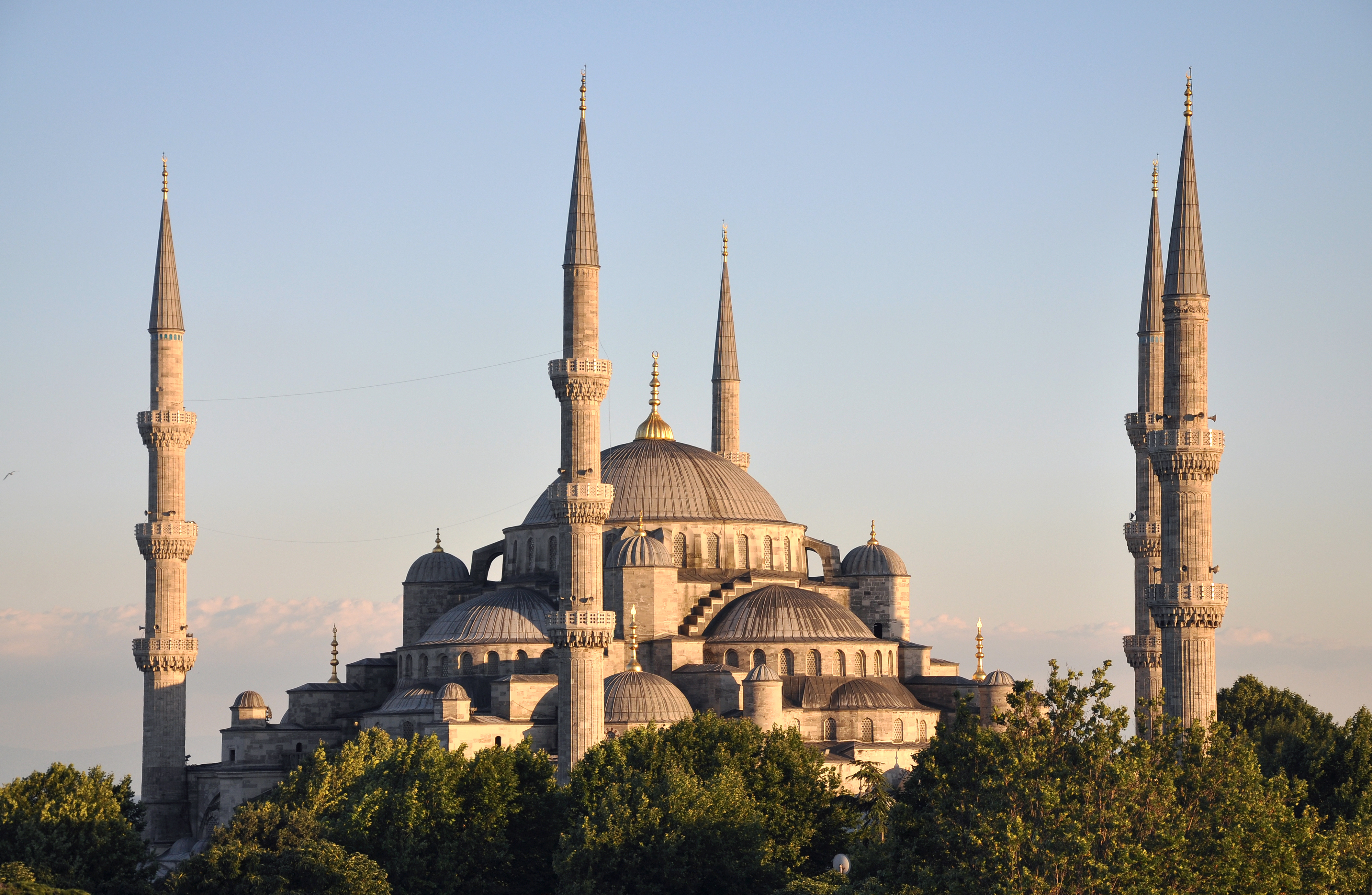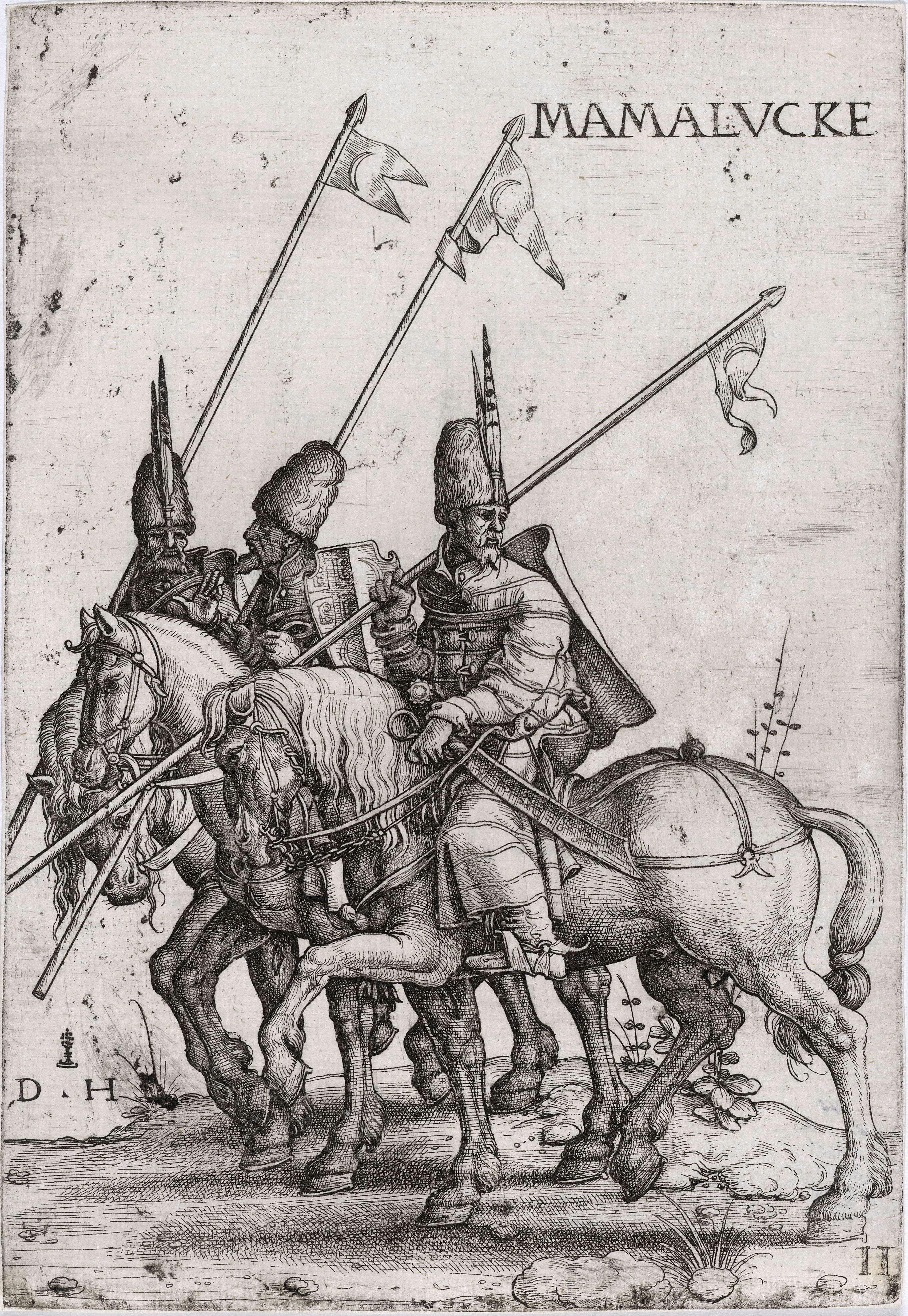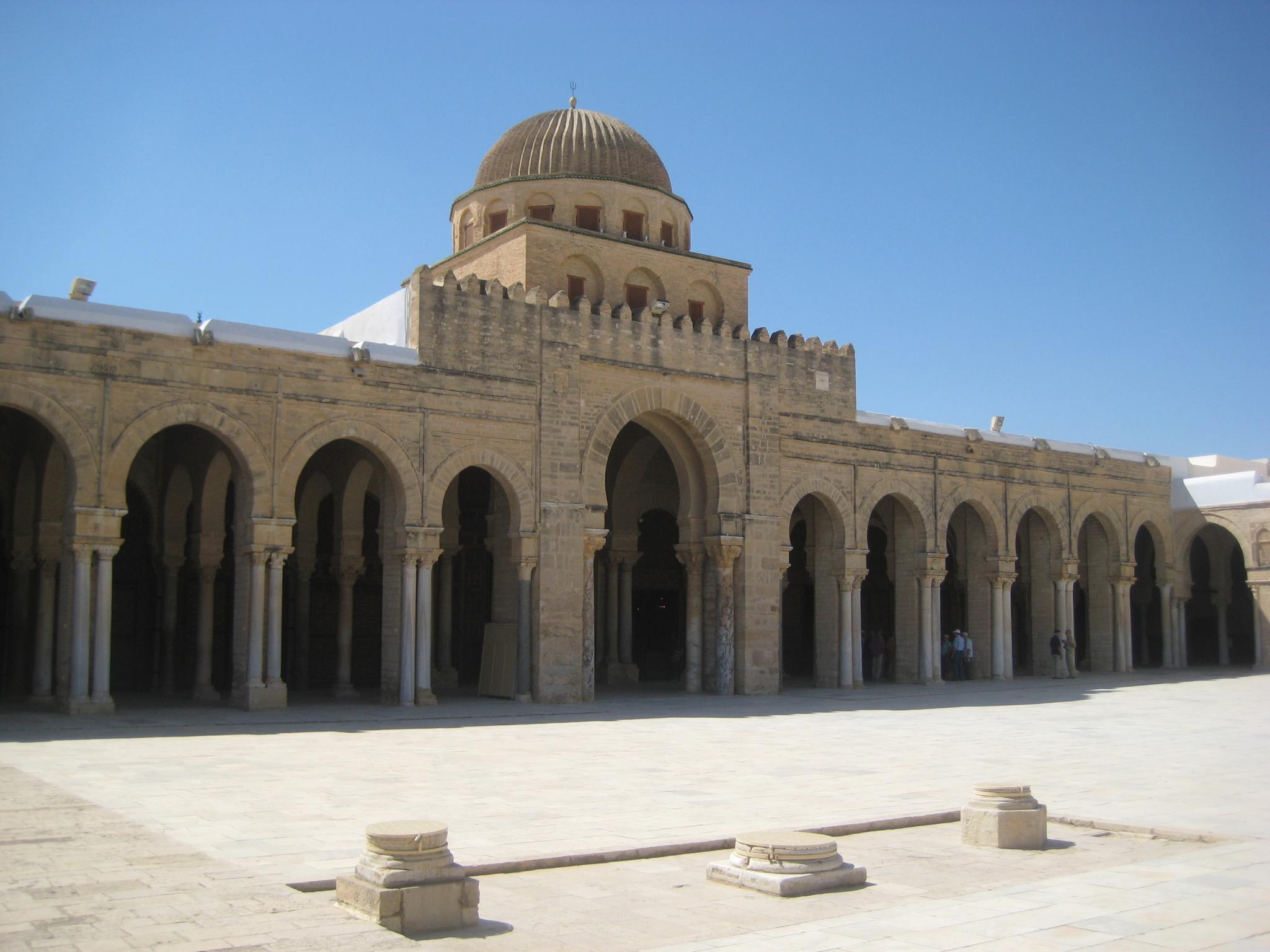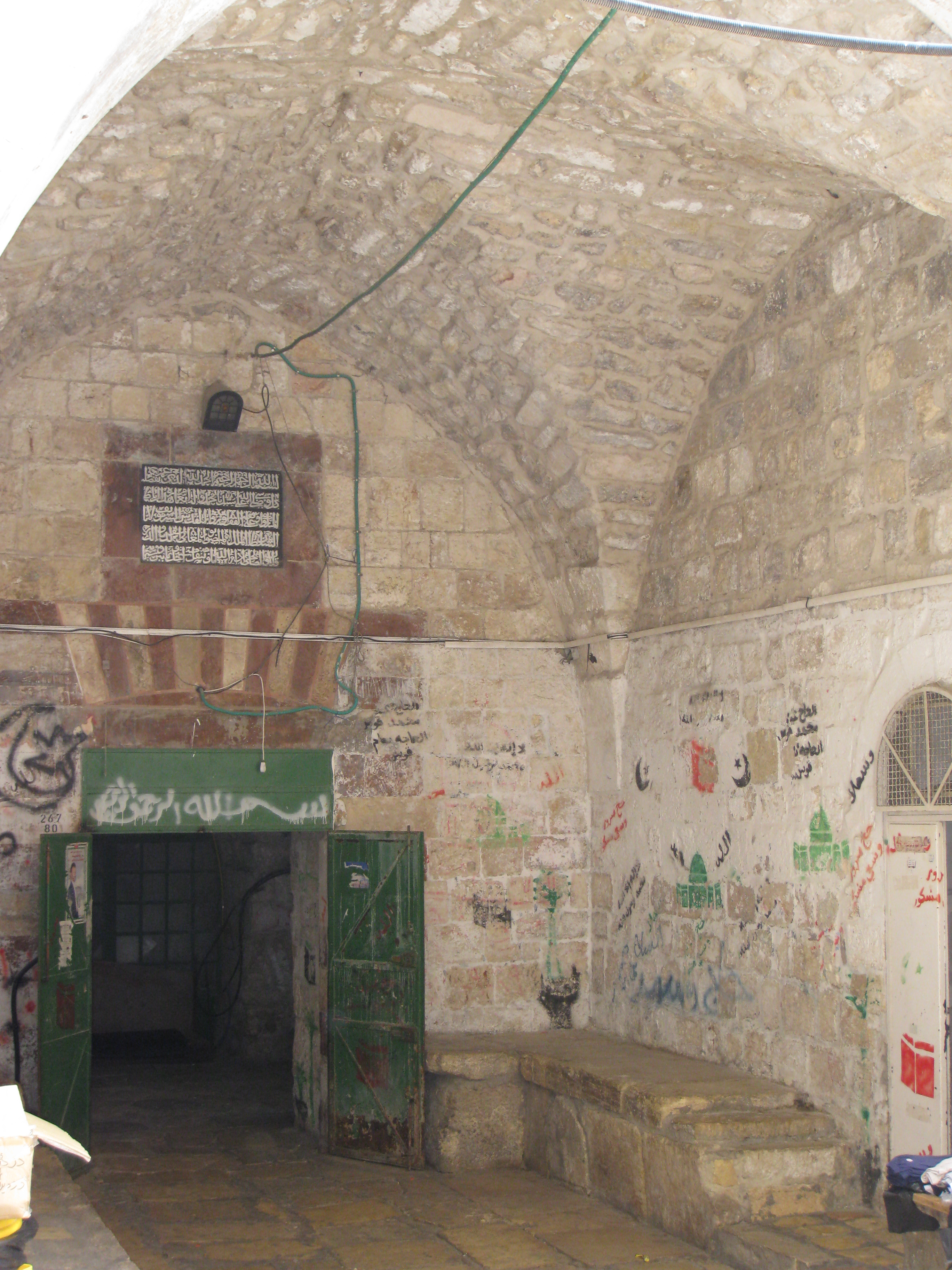|
Taynal Mosque
The Taynal Mosque, or the Mosque of Emir Saif al-Din Taynal al-Hajib is a mosque in Tripoli, Lebanon. It is one of the most beautiful mosques in terms of architectural grandeur in the Levant region. Only second to Tripoli's Grand Mansouri Mosque in terms of socio-religious importance, the mosque stands in the middle of an orchard and visible from all sides; it's an oblong structure of sandstone. It is located south of Old Tripoli in the historic Bab al-Ramel district. Built in 1336, many parts of the mosque are remnants of a Crusader church built by the Carmelite Fathers during the time of the Crusades, while the Crusaders themselves had built the church on top of a Roman temple dedicated to Zeus, locally called Baal. Several medieval travelers, including the 14th-century traveler Ibn Batutah, have written eloquently about it. The Taynal Mosque was built by the Mamluk Sultanate deputy in Tripoli, Prince (Emir) Saif al-Din Taynal al-Hajib. As previously mentioned, it was built o ... [...More Info...] [...Related Items...] OR: [Wikipedia] [Google] [Baidu] |
Tripoli, Lebanon
Tripoli ( ar, طرابلس/ALA-LC: ''Ṭarābulus'', Lebanese Arabic: ''Ṭrablus'') is the largest city in northern Lebanon and the second-largest city in the country. Situated north of the capital Beirut, it is the capital of the North Governorate and the Tripoli District, Lebanon, Tripoli District. Tripoli overlooks the eastern Mediterranean Sea, and it is the northernmost seaport in Lebanon. It holds a string of four small islands offshore. The Palm Islands Nature Reserve, Palm Islands were declared a protected area because of their status of haven for endangered loggerhead turtles (''Chelona mydas''), rare monk seals and migratory birds. Tripoli borders the city of El Mina, the port of the Tripoli District, which it is geographically conjoined with to form the greater Tripoli conurbation. The history of Tripoli dates back at least to the 14th century BCE. The city is well known for containing the Mansouri Great Mosque and the largest Crusader States, Crusader fortress in L ... [...More Info...] [...Related Items...] OR: [Wikipedia] [Google] [Baidu] |
Kadisha River
The Kadisha River or Nahr Abu Ali is a river in Lebanon. It runs east to west from the Kadisha grotto, halfway between Bsharri and the Cedars of God, to the Mediterranean Sea at Tripoli. The river runs along the Kadisha Valley Kadisha Valley ( ar, وادي قاديشا), also romanized as the Qadisha Valley and also known as the Kadisha Gorge or Wadi Kadisha (french: Ouadi Qadisha), is a gorge that lies within the Bsharri and Zgharta Districts of the North Governora ..., carving out deep gorges. On its passage through Tripoli, it is walled and partially covered. The river is very polluted. References {{reflist Rivers of Lebanon ... [...More Info...] [...Related Items...] OR: [Wikipedia] [Google] [Baidu] |
Mosques In Tripoli, Lebanon
A mosque (; from ar, مَسْجِد, masjid, ; literally "place of ritual prostration"), also called masjid, is a place of prayer for Muslims. Mosques are usually covered buildings, but can be any place where prayers (sujud) are performed, including outdoor courtyards. The first mosques were simple places of prayer for Muslims, and may have been open spaces rather than buildings. In the first stage of Islamic architecture, 650-750 CE, early mosques comprised open and closed covered spaces enclosed by walls, often with minarets from which calls to prayer were issued. Mosque buildings typically contain an ornamental niche (''mihrab'') set into the wall that indicates the direction of Mecca (''qiblah''), ablution facilities. The pulpit (''minbar''), from which the Friday (jumu'ah) sermon (''khutba'') is delivered, was in earlier times characteristic of the central city mosque, but has since become common in smaller mosques. Mosques typically have segregated spaces for men and wo ... [...More Info...] [...Related Items...] OR: [Wikipedia] [Google] [Baidu] |
Mamluk Architecture In Lebanon
Mamluk ( ar, مملوك, mamlūk (singular), , ''mamālīk'' (plural), translated as "one who is owned", meaning "slave", also transliterated as ''Mameluke'', ''mamluq'', ''mamluke'', ''mameluk'', ''mameluke'', ''mamaluke'', or ''marmeluke'') is a term most commonly referring to non-Arab, ethnically diverse (mostly Southern Russian, Turkic, Caucasian, Eastern and Southeastern European) slave-soldiers and freed slaves who were assigned military and administrative duties, serving the ruling Arab dynasties in the Muslim world. The most enduring Mamluk realm was the knightly military class in Egypt in the Middle Ages, which developed from the ranks of slave-soldiers. Originally the Mamluks were slaves of Turkic origin from the Eurasian Steppe, but the institution of military slavery spread to include Circassians, Abkhazians, Georgians,"Relations of the Georgian Mamluks of Egypt with Their Homeland in the Last Decades of the Eighteenth Century". Daniel Crecelius and Gotcha ... [...More Info...] [...Related Items...] OR: [Wikipedia] [Google] [Baidu] |
Hanbali
The Hanbali school ( ar, ٱلْمَذْهَب ٱلْحَنۢبَلِي, al-maḏhab al-ḥanbalī) is one of the four major traditional Sunni schools ('' madhahib'') of Islamic jurisprudence. It is named after the Arab scholar Ahmad ibn Hanbal (d. 855), and was institutionalized by his students. The Hanbali madhhab is the smallest of four major Sunni schools, the others being the Hanafi, Maliki and Shafi`i. The Hanbali school derives ''sharia'' primarily from the '' Qur'an'', the '' Hadiths'' (sayings and customs of Muhammad), and the views of Sahabah (Muhammad's companions). In cases where there is no clear answer in sacred texts of Islam, the Hanbali school does not accept '' istihsan'' (jurist discretion) or '''urf'' (customs of a community) as a sound basis to derive Islamic law, a method that Hanafi and Maliki Sunni '' madh'habs'' accept. Hanbali school is the strict traditionalist school of jurisprudence in Sunni Islam. It is found primarily in the countries of Saudi ... [...More Info...] [...Related Items...] OR: [Wikipedia] [Google] [Baidu] |
Maliki
The ( ar, مَالِكِي) school is one of the four major schools of Islamic jurisprudence within Sunni Islam. It was founded by Malik ibn Anas in the 8th century. The Maliki school of jurisprudence relies on the Quran and hadiths as primary sources. Unlike other Islamic fiqhs, Maliki fiqh also considers the consensus of the people of Medina to be a valid source of Islamic law. The Maliki school is one of the largest groups of Sunni Muslims, comparable to the Shafi`i madhhab in adherents, but smaller than the Hanafi madhhab. Sharia based on Maliki doctrine is predominantly found in North Africa (excluding northern and eastern Egypt), West Africa, Chad, Sudan, Kuwait, Bahrain, Qatar, the Emirate of Dubai ( UAE), and in northeastern parts of Saudi Arabia.Jurisprudence and Law – Islam Reorienting the Veil, University of ... [...More Info...] [...Related Items...] OR: [Wikipedia] [Google] [Baidu] |
Hanafi
The Hanafi school ( ar, حَنَفِية, translit=Ḥanafiyah; also called Hanafite in English), Hanafism, or the Hanafi fiqh, is the oldest and one of the four traditional major Sunni schools ( maddhab) of Islamic Law (Fiqh). It is named after the 8th century Kufan scholar, Abu Hanifa, a Tabi‘i of Persian origin whose legal views were preserved primarily by his two most important disciples, Imam Abu Yusuf and Muhammad al-Shaybani. It is considered one of the most widely accepted maddhab amongst Sunni Muslim community and is called the ''Madhhab of Jurists'' (maddhab ahl al-ray). The importance of this maddhab lies in the fact that it is not just a collection of rulings or sayings of Imam Abu Hanifa alone, but rather the rulings and sayings of the council of judges he established belong to it. It had a great excellence and advantage over the establishment of Sunni Islamic legal science. No one before Abu Hanifa preceded in such works. He was the first to solve the c ... [...More Info...] [...Related Items...] OR: [Wikipedia] [Google] [Baidu] |
Shafiʽi School
The Shafii ( ar, شَافِعِي, translit=Shāfiʿī, also spelled Shafei) school, also known as Madhhab al-Shāfiʿī, is one of the four major traditional schools of religious law (madhhab) in the Sunnī branch of Islam. It was founded by Arab theologian Muḥammad ibn Idrīs al-Shāfiʿī, "the father of Muslim jurisprudence", in the early 9th century. The other three schools of Sunnī jurisprudence are Ḥanafī, Mālikī and Ḥanbalī. Like the other schools of fiqh, Shafii recognize the First Four Caliphs as the Islamic prophet Muhammad’s rightful successors and relies on the Qurʾān and the "sound" books of Ḥadīths as primary sources of law. The Shafi'i school affirms the authority of both divine law-giving ( the Qurʾān and the Sunnah) and human speculation regarding the Law. Where passages of Qurʾān and/or the Ḥadīths are ambiguous, the school seeks guidance of Qiyās (analogical reasoning). The Ijmā' (consensus of scholars or of the community) ... [...More Info...] [...Related Items...] OR: [Wikipedia] [Google] [Baidu] |
Mamluk
Mamluk ( ar, مملوك, mamlūk (singular), , ''mamālīk'' (plural), translated as "one who is owned", meaning "slave", also transliterated as ''Mameluke'', ''mamluq'', ''mamluke'', ''mameluk'', ''mameluke'', ''mamaluke'', or ''marmeluke'') is a term most commonly referring to non-Arab, ethnically diverse (mostly Southern Russian, Turkic, Caucasian, Eastern and Southeastern European) slave-soldiers and freed slaves who were assigned military and administrative duties, serving the ruling Arab dynasties in the Muslim world. The most enduring Mamluk realm was the knightly military class in Egypt in the Middle Ages, which developed from the ranks of slave-soldiers. Originally the Mamluks were slaves of Turkic origin from the Eurasian Steppe, but the institution of military slavery spread to include Circassians, Abkhazians, Georgians,"Relations of the Georgian Mamluks of Egypt with Their Homeland in the Last Decades of the Eighteenth Century". Daniel Crecelius and Gotch ... [...More Info...] [...Related Items...] OR: [Wikipedia] [Google] [Baidu] |
Qalawun
( ar, قلاوون الصالحي, – November 10, 1290) was the seventh Bahri Mamluk sultan; he ruled Egypt from 1279 to 1290. He was called (, "Qalāwūn the Victorious"). Biography and rise to power Qalawun was a Kipchak, ancient Turkic people that have since been absorbed into modern Kazakh people, from the Burj Oghlu tribe, who became a mamluk (slave soldier) in the 1240s after being sold to a member of Sultan al-Kamil's household. Qalawun was known as ''al-Alfī'' ("the Thousander"), because as-Salih Ayyub bought him for a thousand dinars of gold. Qalawun initially barely spoke Arabic, but he rose in power and influence and became an emir under Sultan Baibars, whose son, al-Said Barakah, was married to Qalawun's daughter. Baibars died in 1277 and was succeeded by Barakah. In early 1279, as Barakah and Qalawun invaded the Armenian Kingdom of Cilicia, there was a revolt in Egypt that forced Barakah to abdicate upon his return home. He was succeeded by his brother Sola ... [...More Info...] [...Related Items...] OR: [Wikipedia] [Google] [Baidu] |
Sunni Islam
Sunni Islam () is the largest branch of Islam, followed by 85–90% of the world's Muslims. Its name comes from the word ''Sunnah'', referring to the tradition of Muhammad. The differences between Sunni and Shia Muslims arose from a disagreement over the succession to Muhammad and subsequently acquired broader political significance, as well as theological and juridical dimensions. According to Sunni traditions, Muhammad left no successor and the participants of the Saqifah event appointed Abu Bakr as the next-in-line (the first caliph). This contrasts with the Shia view, which holds that Muhammad appointed his son-in-law and cousin Ali ibn Abi Talib as his successor. The adherents of Sunni Islam are referred to in Arabic as ("the people of the Sunnah and the community") or for short. In English, its doctrines and practices are sometimes called ''Sunnism'', while adherents are known as Sunni Muslims, Sunnis, Sunnites and Ahlus Sunnah. Sunni Islam is sometimes referr ... [...More Info...] [...Related Items...] OR: [Wikipedia] [Google] [Baidu] |
Mamluk Sultanate
The Mamluk Sultanate ( ar, سلطنة المماليك, translit=Salṭanat al-Mamālīk), also known as Mamluk Egypt or the Mamluk Empire, was a state that ruled Egypt, the Levant and the Hejaz (western Arabia) from the mid-13th to early 16th centuries. It was ruled by a military caste of mamluks (manumitted slave soldiers) headed by the sultan. The Abbasid caliphs were the nominal sovereigns. The sultanate was established with the overthrow of the Ayyubid dynasty in Egypt in 1250 and was conquered by the Ottoman Empire in 1517. Mamluk history is generally divided into the Turkic or Bahri period (1250–1382) and the Circassian or Burji period (1382–1517), called after the predominant ethnicity or corps of the ruling Mamluks during these respective eras.Levanoni 1995, p. 17. The first rulers of the sultanate hailed from the mamluk regiments of the Ayyubid sultan as-Salih Ayyub (), usurping power from his successor in 1250. The Mamluks under Sultan Qutuz and Baybars rou ... [...More Info...] [...Related Items...] OR: [Wikipedia] [Google] [Baidu] |








